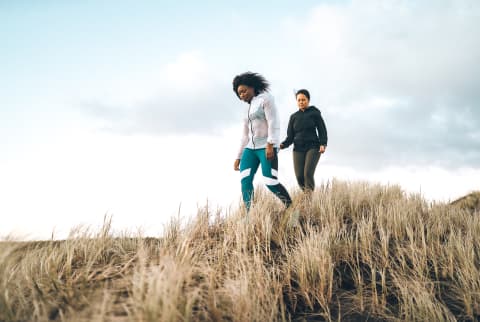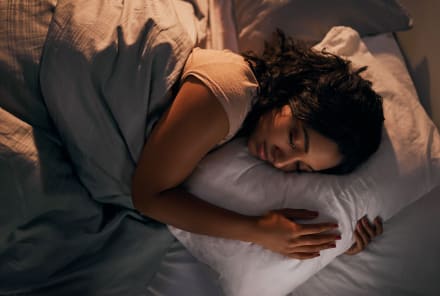Advertisement
Light Physical Activity May Lower Sleep Apnea Risk, Study Says


About 29 million American adults, which is about 12% of the adult population, have sleep apnea. The condition is characterized by a constant start-stop breathing pattern, which can disrupt sleep and cause snoring, headaches, or mood changes.1 Certain lifestyle changes have been shown to reduce the effects of sleep apnea, and a study published in the Journal of Clinical Sleep Medicine says increased exercise is one of them.
The researchers found even a slight increase in physical activity can lower the risk of obstructive sleep apnea (OSA) and published their results this past June.
What did the researchers find?
To determine whether there was a connection between sleep quality and physical activity, researchers analyzed 155,448 adults who were 46 years old on average—making this the largest study of its kind, to date. Pulling data from the Ontario Health study, researchers looked specifically at the lifestyle, medical, socio-demographic, and sleep patterns of each participant.
According to the research, nearly 7% of participants had been diagnosed with sleep apnea. Those who fell into that group were also more likely to lead more sedentary lifestyles than those without.
When comparing the activity levels between the two groups, researchers determined that even minor increases in physical activity levels helped with the sleep disorder. In fact, just a 10% increase in movements, like walking, lowered the risks of developing sleep apnea.
"Our results highlight the importance of physical activity as a preventive measure against developing sleep apnea," senior author of the study Lyle Palmer, Ph.D., says in a news release. "One surprising finding was that not only vigorous physical activity but also just walking alone was associated with a decreased risk of sleep apnea."
So how much exercise is needed to lower the risks? When it comes to walking, the researchers recommend adding at least 20 more minutes to your daily stroll. More intense activities only needed eight extra minutes to lower the risk of sleep apnea and improve overall sleep quality.
Why is this study so important?
"The rates of sleep apnea in children and adults are continuing to rise. Therefore, understanding the role of modifiable protective factors for sleep apnea is important," Palmer says. "Exercise is one such protective factor and has many other positive effects on general health."
Introducing these recommendations to patients struggling with sleep apnea might be a helpful, and free, way to improve the unwanted symptoms. Other methods for enhancing sleep quality may include taking a magnesium supplement, sticking to a bedtime (or at least a nighttime routine), and keeping your room at an optimal temperature each night.
Watch Next
Enjoy some of our favorite clips from classes
Enjoy some of our favorite clips from classes
What Is Meditation?
Mindfulness/Spirituality | Light Watkins
Box Breathing
Mindfulness/Spirituality | Gwen Dittmar
What Breathwork Can Address
Mindfulness/Spirituality | Gwen Dittmar
The 8 Limbs of Yoga - What is Asana?
Yoga | Caley Alyssa
Two Standing Postures to Open Up Tight Hips
Yoga | Caley Alyssa
How Plants Can Optimize Athletic Performance
Nutrition | Rich Roll
What to Eat Before a Workout
Nutrition | Rich Roll
How Ayurveda Helps Us Navigate Modern Life
Nutrition | Sahara Rose
Messages About Love & Relationships
Love & Relationships | Esther Perel
Love Languages
Love & Relationships | Esther Perel
What Is Meditation?
Box Breathing
What Breathwork Can Address
The 8 Limbs of Yoga - What is Asana?
Two Standing Postures to Open Up Tight Hips
How Plants Can Optimize Athletic Performance
What to Eat Before a Workout
How Ayurveda Helps Us Navigate Modern Life
Messages About Love & Relationships
Love Languages
Advertisement

New Study Confirms The 3 Habits That Age Your Brain Faster
Molly Knudsen, M.S., RDN
















